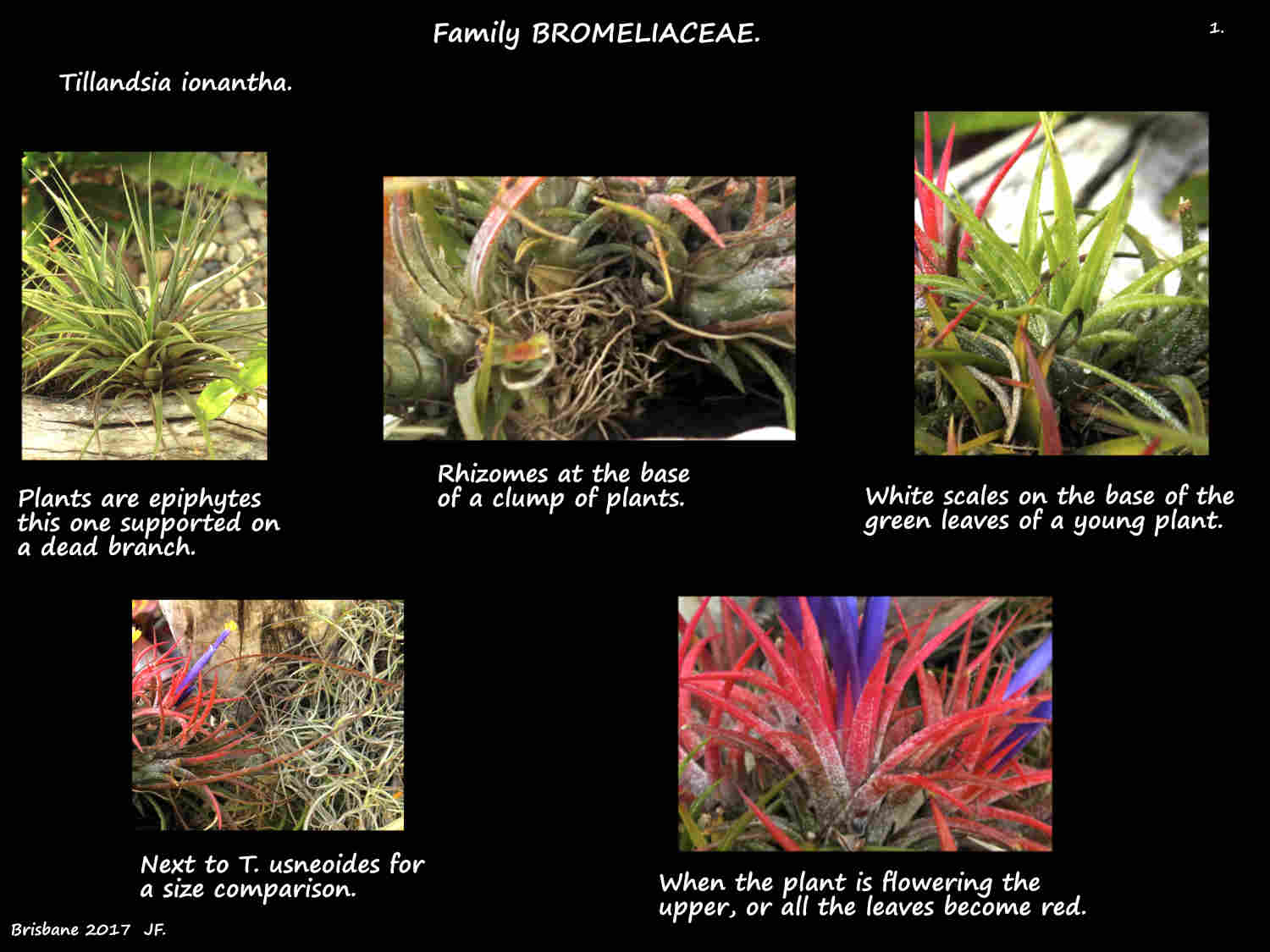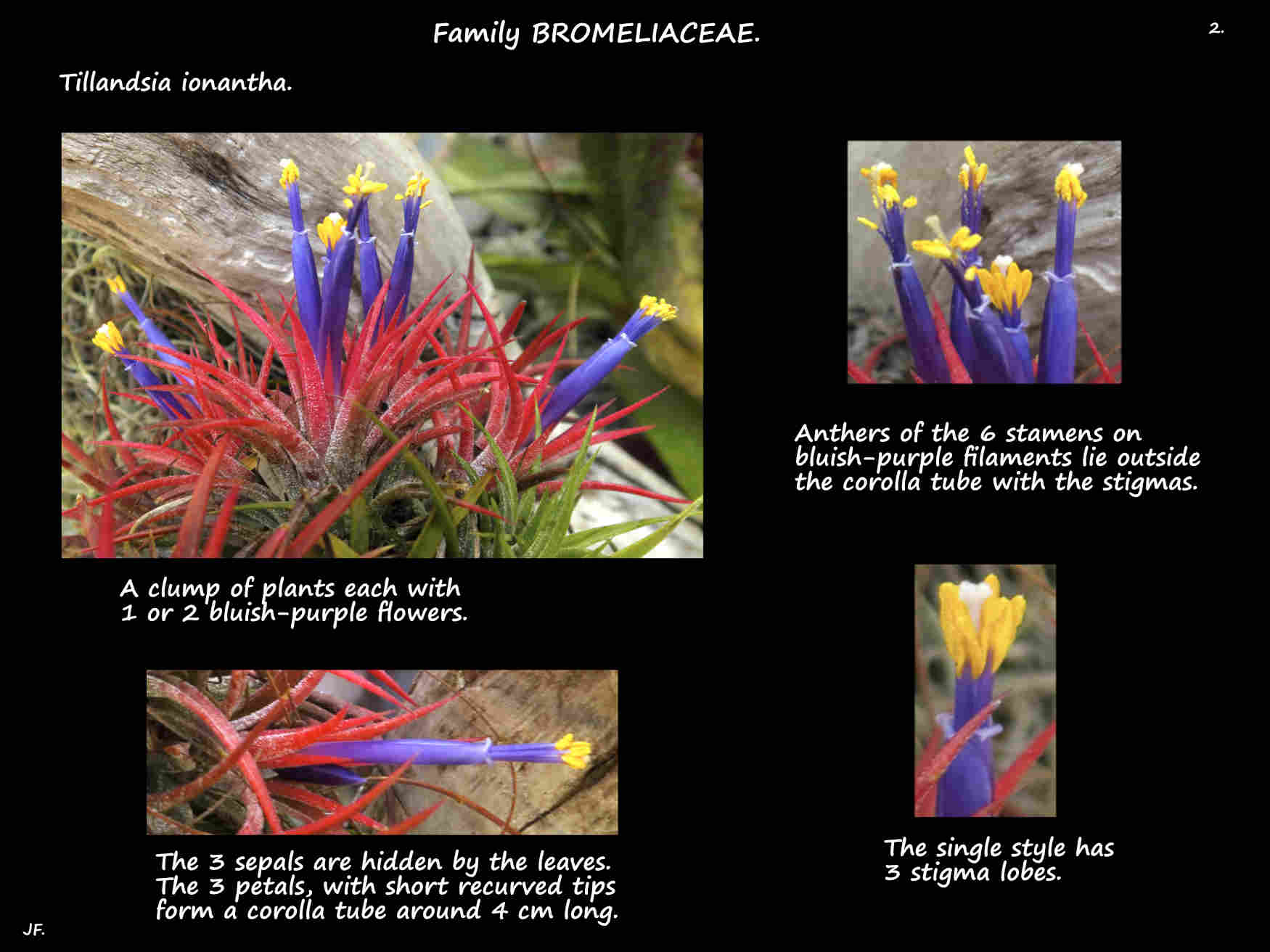Tillandsia ionantha.
The Sky plant, Air Plant or Blushing Bride is commonly cultivated.
They are epiphytic mainly on trees but occasionally on rocks.
Production of offsets leads to the formation of large dense clumps.
They have no true roots so do not grow on the ground.
Individual plants are 6 to 12 cm high and have no stem.
The up to 40 leaves are concentrated in a basal rosette.
Leaves have no petiole with the base forming a long sheath down the stem.
The simple arching blades are linear or narrowly triangular with a pointed tip.
Commonly 3 to 6 cm long and 5 mm wide the leaves can sometimes be up to 10 or 15 cm long.
They are covered in specialised scales or trichomes that absorb water and nutrients.
Depending on the density of the scales the leaves can be green or grey, white or silver.
Before the plant flowers the upper leaves, and occasionally the whole plant turn pink or bright red.
Terminal inflorescences have a very short leafless stalk or scape.
The red lanceolate to ovate bracts on it have some scales on the pointed tip.
Each scape has 1 to a few tubular flowers around 4 cm long.
The 3 lanceolate sepals around 1.5 cm long are fused for a few mms at the base.
Hidden among the leaves they have a keel on the outer surface.
The 3 narrow petals form a long tubular corolla with the terminal few mms curled back.
The petals are a pale to deep bluish-violet.
There are 6 stamens with bluish-violet filaments and yellow anthers.
The superior ovary has a single style with 3 white stigmas.
The anthers and stigmas lie outside the corolla tube.
The fruit are septicidal capsules with seeds having a tuft of hairs at the base.
After flowering the plants produces offsets then die.
There are a numerous varieties and cultivars with the differences including having ovate leaves,
scapes up to 10 cm tall, yellow, white or rose bracts, inflorescences with up to 20 flowers,
white or yellow sepals and white, pink or dark blue petals.
J.F.



